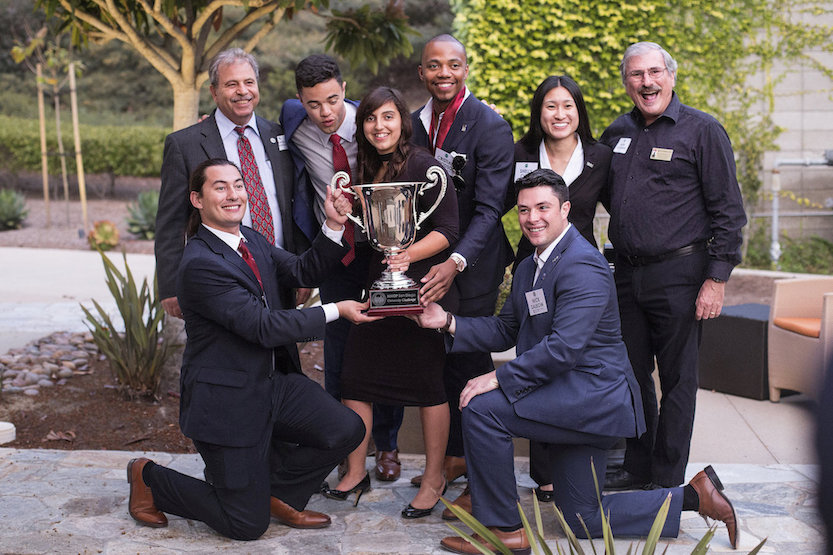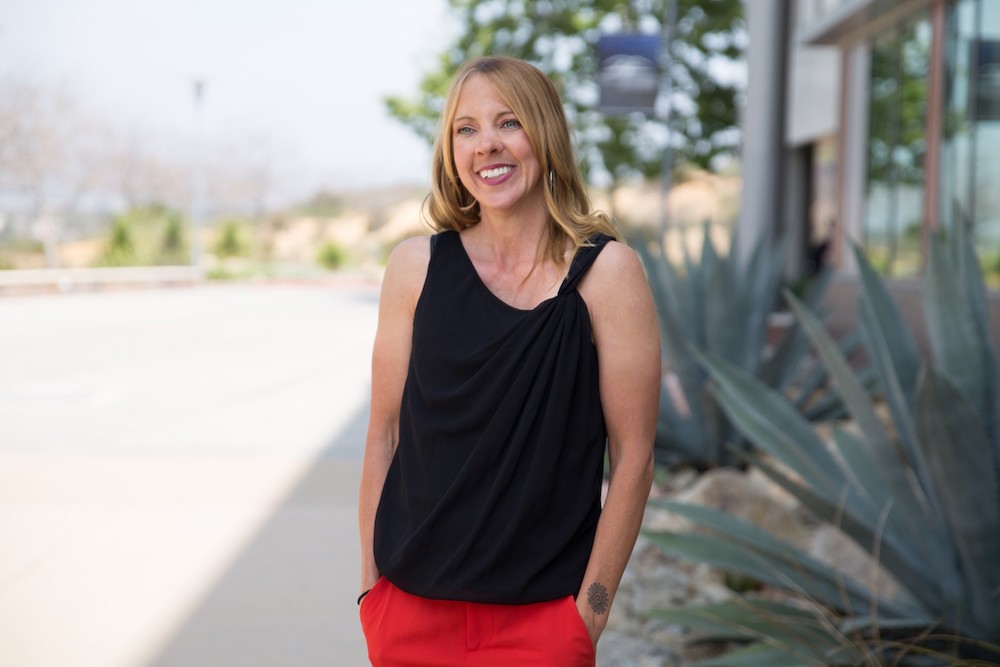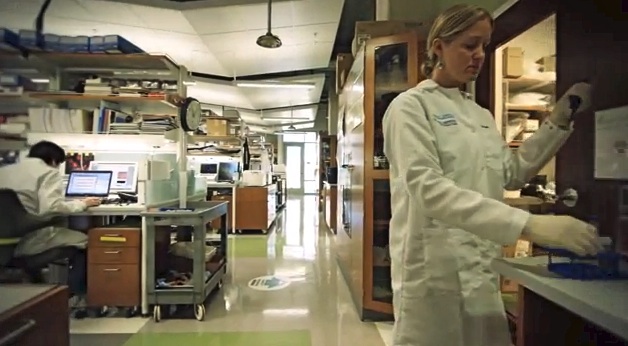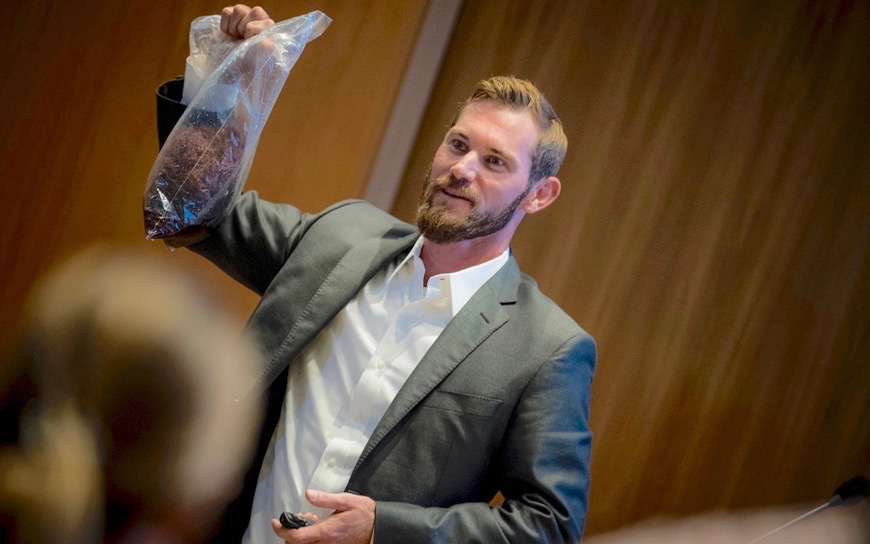Daily Business Report-April 30, 2018
Comhear’s YARRA 3DX audio sound bar. (Credit: Comhear)
Comhear Completes $1.1 Million Fundraising
Campaign for its 3D Audio Sound Bar
Comhear Inc., a San Diego-based audio technology company, said it will complete its successful crowdfunding campaign on May 4 for YARRA 3DX, its first commercial audio product designed to provide HiFi sound for gaming, music, home theater and VR/AR applications.
The company said it has raised nearly $1.1 million and is starting production of it 3D audio sound bar, with plans to deliver the first production units to crowdfunding participants, followed by a retail launch of the product on Amazon this summer.

Crowdfunding for the 3D audio sound bar, powered by the company’s patented MyBeam technology, began in September 2017. As of April 25, 2018, the company said it raised more than 1400 percent of its original goal, initially via Kickstarter, followed by Indiegogo On Demand.
The technology that makes YARRA 3DX possible — MyBeam — was developed in conjunction with researchers at University of California San Diego and has received critical acclaim. The company has won several awards for its 3D audio technology, including an Innovation Award for the YARRA 3DX platform at the 2018 Consumer Electronics Show and a Technology Award for the MyBeam directional audio technology at the 2017 CES Show. Comhear also received an “Alfie” award from the LA Audio Show for superior technological achievement.

Offering both wired and wireless connectivity, analog and digital inputs (USB, TOSLink and HDMI), YARRA 3DX can be used as a standalone speaker or as a part of a home entertainment system. The sound bar is controllable by an app that allows users to adjust settings for near and far field operation, beam selection and presets, surround modes, positional data and firmware updates.
__________________
Ramona to Get First Affordable
Housing for Low-Income Seniors
Construction is underway on the Schmale Family Senior Residence, a 62-unit affordable apartment complex for low-income seniors in Ramona. Chelsea Investment Corp. and Serving Seniors partnered on the $21.9 million project, scheduled to open in spring 2019.
The two-story building is comprised of 50 one-bedroom apartments, offering 560 square feet, and 12 two-bedroom units, offering 790 square feet. An on-site manager will occupy a two-bedroom apartment.
Located at 430 16th St. near transit, shopping and services, Schmale Family Senior Residence will provide comprehensive support services for its residents, aged 55 and over. This is the first new affordable housing for low-income seniors to be built in Ramona.
“Serving Seniors first partnered with Chelsea Investment Corp. in 1999 and have since developed over 500 senior housing units together,” said Paul Downey, President/CEO of Serving Seniors. “Our organization thrives on its alliances with others. In this case, a generous gift from long-time Serving Seniors supporters Marge and Neal Schmale will help provide a safety net of support services for our future residents.”
Apartments at Schmale Family Senior Residence are restricted to seniors earning between 30 and 50 percent of the area median income. Qualified residents will pay 30 percent of their income to live there, with Federal Section 8 housing vouchers available to cover the remainder of the rents. For a one-bedroom apartment, rents are anticipated to range from $476 to $818 per month, and $569 to $978 per month for a two-bedroom unit.
__________________
General Atomics Gets $2.2 Million
From Department of Energy
The U.S. Department of Energy (DOE) has selected 13 projects, including one from General Atomics, to receive approximately $60 million in federal funding for cost-shared research and development for advanced nuclear technologies.
Under the Advanced Reactor Development Projects pathway, General Atomics is receiving DOE funding of $2,210,995 for a fuel performance modeling and simulation tool project that will reduce the schedule and cost burden associated with qualifying new fuel systems for commercial deployment.General Atomics also will receive $380,655 in DOE funding to conduct a pre-licensing review of a fuel system for use in a gas-cooled fast reactor long-life core.
__________________
United Way Receives $100,000 to Support
Early Grade Attendance and Literacy Project
United Way of San Diego Councy has received a $100,000 grant from the David C. Copley Foundation and will use it to grow its early grade attendance and literacy pilot initiatives in City Heights and Lemon Grove. The grant will also help United Way share best practices with regional partners for greater reach.
United Way’s early grade literacy work directly relates to its mission of carrying on the Copley family’s legacy of giving by funding nonprofit organizations making a difference, including in youth development and education,said David C. Copley Foundation President and CEO Dean P. Dwyer.
The initiatives include Every Student, Every Day,working to help children that are chronically absent through multiple angles, using bachelor and master’s level interns, working on-site at the schools to monitor and support students and their families to improve attendance. This leads to gains in academic performance and helps to close the achievement gap by increasing school attendance. Readers in the Heightsis United Way’s literacy summer camp, working with partners to promote active learning for kindergarten through fourth grade students.
__________________
Baker Electric Broadens Portfolio,
Rebrands as Baker Electric Home Energy
Baker Electric Solar announced that it has broadened its portfolio of offerings to include smart home solutions and advanced heating and air systems, and changed its name to Baker Electric Home Energy.
The new company name reflects Baker’s commitment to provide homeowners a comprehensive set of innovative products and services designed to generate, control and optimize the use of their energy, said Mike Teresso, president.
“With increased concern about U.S. energy costs, many Southern California homeowners are looking to break free of their utility and attain energy independence,” said Teresso. “We now offer a range of products and services that enable individuals and families to achieve that freedom by owning and controlling their energy, saving money and creating the lifestyle perfect for the way they want to live.We’ve provided over 8500 homeowners the best solar products, engineering and installation in Southern California.”
__________________
Solar System Should Save San Diego
Education Office Almost $300,000 a Year
San Diego County Office of Education (SDCOE), which provides a variety of services for the 42 school districts, 124 charter schools, and five community college districts in the county, and Borrego Solar Systems celebrated the operation of a 1.05-megawatt solar carport system at its main campus on Linda Vista Drive.
The solar power system is expected to save SDCOE $282,000 each year and provide enough energy to meet approximately 60 percent of the facility’s electricity demand.
Borrego Solar Systems, a San Diego-based commercial solar company, developed, designed, and installed SDCOE’s solar project.
Borrego Solar and SDCOE are also planning for a 106-kW solar project at Cuyamaca Outdoor School this summer and a 256-kW system at the South Regional Education Center in National City.
—Solar Power World
__________________

San Diego State Wins
NAIOP University Challenge
A student team from San Diego State University and The Corky McMillin Center for Real Estate submitted the winning development plan at NAIOP San Diego’s 8th annual University Challenge, held on April 25 at Paseo Del Mar.
The SDSU student team, comprised of Jeremiah Taylor, Trey Golston, Holly Miller, Shelly Chen, Nick Zalkow and Cristian Goodson, presented their development plan for a mixed-use, 26.44-acre development site on Avenida Encinas in Carlsbad. Other teams competing for the prize included University of California at San Diego Department of Urban Studies and Planning and University of San Diego’s Burnham Moores Center for Real Estate.
The participating institutions send a team of up to six students to the Challenge with the objective of creating a development plan to compete as the highest and best use for the proposed site.
The SDSU students proposed a dynamic mix of culinary school, community garden, hotels, apartments, for-lease office space and office condos. Their decision to make a culinary school the highlight of the proposed development stems from the widespread incidence of health issues that can be mitigated with a healthy diet.
__________________
10News Wins Edward R. Murrow Award
ABC10/KGTV is the only San Diego station to win an Edward R. Murrow Award in recognition of excellence in broadcast and digital journalism. There were a record number of 4,400 entries this year. With extensive coverage of the Lilac Fire, 10News at 11p.m. was recognized as the top newscast in the region, which includes Los Angeles, San Francisco and Las Vegas.
__________________
USD Economic Index Reaches Another High
The USD Burnham-Moores Center for Real Estate’s Index of Leading Economic Indicators for San Diego County rose 0.5 percent in March. Leading the way to the upside was a strong positive move by initial claims for unemployment insurance. Also up but to a lesser extent were local stock prices, consumer confidence, help wanted advertising, and the outlook for the national economy. The only down component was residential units authorized by building permits, which were down moderately.
March’s increase marked the 17th straight month that the USD Index has advanced or remained unchanged (15 of those months were increases). It was also the third consecutive month that it has hit an all-time high. The outlook for the local economy thus continues to be positive at least through the end of 2018. Job growth for the first quarter of 2018 in San Diego County was solid, with wage and salary employment increasing by 26,700 compared to the same quarter in 2017. That is a slightly below the gain of 28,600 jobs for 2017 as a whole. The strongest sectors were health care (+5,500 jobs), professional, scientific, and technical services (+4,500), construction (+4,200), manufacturing (+3,800), and government (+3,300). While health care, construction, and government have been doing well recently, it is encouraging to see a pickup in professional, scientific, and technical services and manufacturing, as jobs in those sectors tend to be higher paying ones. The lagging sectors were finance and insurance (-400) and leisure and hospitality (-800).
__________________

Time and Effort Pay off for UC San Marcos
Professor as Sociology Book Nears Release
By Brian Hiro
Jodie Lawston is an avid cyclist who has ridden in races as long as 500 miles and who moved to Pauma Valley in part to be closer to the notoriously punishing climb up Palomar Mountain.
She didn’t know it at the time, but when the Cal State San Marcos women’s studies professor accepted a job to write her first textbook in 2009, she was taking on an endurance activity of a different kind. Nine years and many marathon days of writing later, Lawston has reached the finish line. She’s the proud author of “Sociology: Structure and Change,” an introduction to sociology textbook that will come out this summer. In the process, she achieved a milestone as the first female sociology author for Pearson, the book’s publisher and the world’s largest textbook company.
Lawston has written three other books, but nothing could have prepared her for this.
“As much as I loved the process, I gave it everything I had,” Lawston said. “I’d be writing for 18 hours a day sometimes, not leaving my house for days. It took a long time, a lot of research.”
The book examines the balance between the macro and micro levels of society, how our social structure is made up of powerful, deeply ingrained institutions, values and beliefs that nonetheless can be shaped and changed by individuals — specifically, in this case, the students who are reading the book as part of their class.
“I was interested in really helping students to see just how we’re affected by society,” said Lawston, who came to CSUSM in 2006 after earning a Ph.D. in sociology at UC San Diego. “By the end of the classes, they’re often really depressed, like, ‘Oh, nothing’s ever going to change because of social structure.’ But it’s about getting them to understand that, no, individuals make up that structure and how can we influence that structure.”
Part of Lawston’s challenge in writing the book was that, although it will be available in a print version, it’s the first in the Pearson sociology catalogue to be built from the ground up as a digital-first textbook, which means it includes activities and interactives that students complete as they read.
“I come from a traditional background where I read textbooks that I memorized and studied and then went and took exams,” Lawston said. “With this, I had to think about whether narrative was the best approach to teaching a concept or a theory. I had to make decisions on where to put interactives or maybe where a video might be better to describe what I’m trying to say.”
The benefit of a digital approach is that the content can be refreshed more easily, and indeed even last month, Lawston was still working on current events updates for each chapter that include some of the big social movements of the present time, including #MeToo and #NeverAgain, the student-led response to the February mass shooting in Parkland, Fla.
“I think that’s one of the strengths of the book, that it’s very, very up to date,” she said. “I would say that structure and agency are very relevant to what’s going on politically and socially.
“Of course, it can be overwhelming, especially when you’re going, ‘Something else changed, I need to rewrite it.’ ”
— Reported in CSUSM NewsCenter




